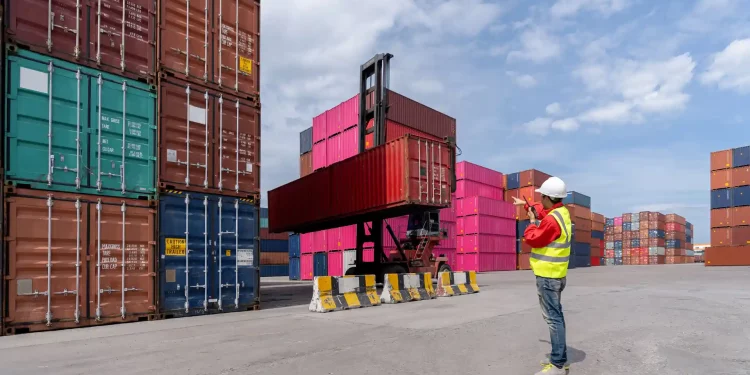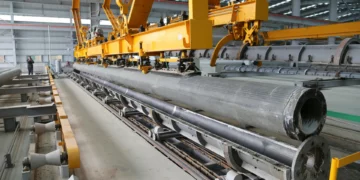There is some reason for hope since China’s exports to the United States resumed growth in January and February of last year, up 5 per cent from the previous year after declining 6.9 per cent in December. However, during the same time frame, exports to the European Union actually decreased by 1.3 per cent.
China’s export and import growth in January-February exceeded expectations, indicating that global commerce is turning a corner, an encouraging sign for authorities as they work to shore up a stuttering economic recovery.
With shipments above forecasts in the first two months of the year, China’s excellent export data now stands alongside that of South Korea, Germany, and Taiwan. The Asian countries are reaping the benefits of a sharp increase in semiconductor demand.
According to customs data released on March 7, exports from the second-largest economy in the world increased by 7.1% in the last two months compared to the same period the previous year. This figure exceeded the 1.9% increase a reliable news portal’s poll predicted. Imports increased by 3.5% compared to a polled growth estimate of 1.5%.
China Targets Steady Growth Amid Development Model Shift
Mr Xu Tianchen, senior economist at the Economist Intelligence Unit (a UK-based forecasting and advisory services firm), stated that the better-than-expected report, which shows that export growth in January–February 2023 was -6.8%, also benefits from a low base effect and reflects a rebound in global commerce led by the electronics sector. China’s customs office publishes the combined trade statistics from January and February in an effort to reduce distortions resulting from the Chinese New Year falling in February of 2024.
On Tuesday, Li Qiang, the incumbent premier of the People’s Republic of China, announced that the nation’s development paradigm, which is mostly dependent on exporting completed goods and industrial overcapacity, will be changed. An ambitious 5% economic growth target was set for 2024.
Over the previous year, policymakers have had to deal with weak growth in the face of a property crisis, consumer spending slowdowns, foreign company divestitures, challenging market conditions for manufacturers, and massive debt loads for local governments. For policymakers to be persuaded that the vital economic engine would support the economy, exports must steadily recover.
Unlike the trade data, for example, the government’s purchasing managers’ index, issued a week ago, showed that manufacturing activity in China contracted for a fifth month in February, while new export orders decreased for the eleventh consecutive month.
Policymakers Vow Continued Measures to Bolster Growth
Zichun Huang, Chinese economist at Capital Economics, a research business firm based in London, stated that after considering seasonality and shifts in export pricing, she estimated that export volumes increased dramatically in January and February, reaching a record high.
There is some reason for hope since China’s exports to the US resumed growth in January and February of last year, up 5% from the previous year after declining 6.9% in December. However, during the same time frame, exports to the EU actually decreased by 1.3%.
Various policymakers have promised to introduce more measures to support growth after the actions taken since June only had a minimal impact. However, experts warn Beijing’s fiscal space is currently extremely constrained, and Li’s speech at the National People’s Congress annual meeting did not instill much confidence in investors.
Many observers feared that unless officials take action to refocus the economy towards domestic consumption and market allocation of resources, China may flirt with stagnation akin to that of Japan later this decade.
China’s trade surplus increased to $125.16 billion in December, as opposed to the poll’s prediction of $103.7 billion and the survey’s prediction of $75.3 billion.

















